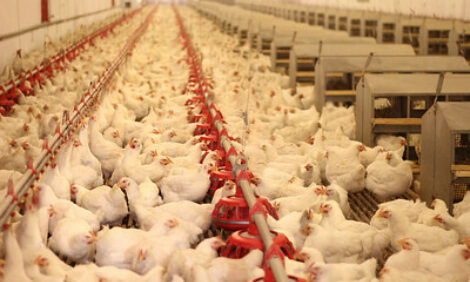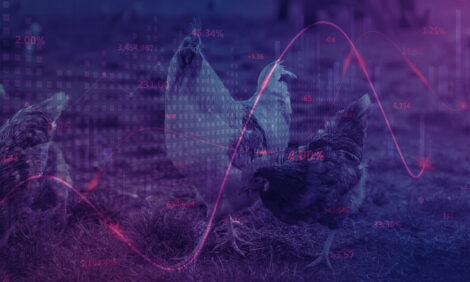



Japan Poultry and Products Annual Overview - August 2005
By the USDA, Foreign Agricultural Service - This article provides the poultry industry data from the USDA FAS Poultry and Products Annual 2005 report for Japan. A link to the full report is also provided. The full report includes all the tabular data which we have ommited from this article.Report Highlights:
The Japanese broiler market had a strong recovery in 2005 following supply disruptions in 2004 caused by Avian Influenza outbreaks in Japan and key supplying countries. Total imports returned to normal levels, projected at 695,000 MT. Slightly lower total consump tion is projected for 2006 due to a weaker food service demand which will likely lead to slightly reduced imports, particularly of raw broiler meat from Brazil. It is widely anticipated that Japan’s ongoing import ban on raw broiler meat from China and Thailand will be extended well into 2006.
2006 Broiler Market Outlook
Soft Outlook Projected for Japan’s 2006 Broiler Market
The Japanese broiler market recovered to more traditional levels in 2005 following the supply
disruptions caused by the outbreaks of Highly Pathogenic Avian Influenza (HPAI) in Japan
and key supplying countries during the previous year (See 2005 situation and update section,
also Ref. JA 4069 and JA 5003). The outlook for 2006 is expected to remain at similar levels.
However, the overall situation could be easily affected by lingering bird flu problems,
increased beef supply (if U.S. beef is already back in the market by then), and foreign
exchange situation, particularly surrounding Chinese Yuan. In addition, on August 1, Japan
and Thailand reached a basic agreement (See separate section below) on an FTA that will
provide some tariff cuts for poultry, which may eventually give Thailand a competitive edge
over China in the poultry trade.
Possible bird flu outbreaks in key exporting countries to Japan continue to pose a serious
concern in 2006. It is widely anticipated that Japan’s on-going import ban on raw broiler
meat from China and Thailand will be extended well into 2006 if sporadic outbreaks persists
in both countries.
The return of U.S. beef, if restored by 2006, on Japanese broiler meat consumption is
expected to be fairly limited, the market may begin to feel some impacts in 2006 as the food
service and the ready-to-eat foods segment, major end users of broiler meat, starts to
feature beef dishes, altering broiler meat.
Slightly Lower Imports Projected in 2006
For the above reasons, Japan’s 2006 total broiler consumption (total broiler meat, including
imports of the prepared broiler meat products) is projected to fall slightly, down by 1% from
2005 to 1.81 million MT, mainly due to reduced imports. Soft market demand will likely
lower Japan’s 2006 total broiler meat imports (including the prepared products), which are
projected down by 2% to 680,000 MT assuming weaker food service demand for imported
raw broiler meat. Of the above total, imported raw broiler meat alone is projected down by
4% to 380,000 MT while imported prepared products are projected unchanged at 300,000
MT from a year before level.
The general picture for Japan’s 2006 broiler meat trade, including prepared products, should
be similar to 2005. Brazil will remain the single largest supplier of frozen raw meat (mostly
boneless leg meat) to Japan. Though limited in quantity, U.S. bone-in leg is expected to
remain in demand, projected annually at about 45,000 MT in 2006, up modestly from the
previous year’s level. Post learned that in an attempt to diversify the sources, Korea, a
neighboring country, has approved four plants in Brazil to import raw broiler meat (mostly
boneless leg meat), other than Denmark, their prime supplier. This change could affect
Brazilian export prices of popular bone-less leg meat to Japan for 2006. However, as of July
2005, no actual imports from Brazil to Korea are known to have taken place.
Meanwhile, China and Thailand will continue to specialize in providing value added cooked
product exports to Japan from the designated processing plants until the ban on their raw
broiler meat is lifted. (According to MAFF, as of July 31, 2005, there are 35 plants in China
and 48 plants in Thailand, which are designated by MAFF for cooked poultry exports to
Japan.) In order to ensure continued trading in the event of an AI outbreak in the US, the
USG continues to work out the final details of a a cooked poultry protocol between Japan and
U.S. that was agreed to in early 2005. Implementation is hoped to start by 2006.
The 2006 domestic production of broiler meat is projected to be slightly lower from last
year’s level to 1.125 million MT. Soft demand may lead to weaker ma rket prices for domestic
broiler cuts.
Japan and Thailand EPA/FTA to Increase Thai’s Competitiveness
Japan reached a basic EPA/FTA agreement with Thailand on August 1 2005. Though final
details are not announced yet, Japanese media reported earlier that minor tariff cuts on
broiler and prepared products are included in the deal. Both countries are expected to sign
the agreement in a couple of month time during a scheduled visit by the Thai Prime Minister
to Japan (After Japan’s Lower House Election in September). Pending completion of the
necessary domestic formalities (ratification at the Diet and changing the domestic tariff law),
actual implementation could start as early as April 2006, the beginning of the next fiscal year
and be phased in over a period of five years.
As shown in the table below, tariff cuts on
bone-less meat and the prepared products (anticipated tariff cuts) will likely put China at a
competitive disadvantage in the poultry trade after the measures a fully implemented. Also,
the tariff of boneless leg and bone-in leg, a major U.S. export item to Japan, is going to be
the same level after five years at 8.5%, which will make U.S. bone-in leg less attractive in
the future. (Note: EPA stands for Economic Partnership Agreement).
2005 Situation Update and Outlook
Japan’s Broiler Supply Back to Normal as Imports Recover Quickly in 2005
For the second half of 2005, Japan’s poultry market is expected to sustain the strong
recovery shown in the first 6 months of the year. On an annual basis, Japanese total broiler
meat consumption for 2005 recovered almost to 2003 levels, and is projected to grow by 6%
to 1.82 million MT mainly due to strong rebounds of imports. Total imports in 2005 are
projected to increase by 19% to 695,000 MT (Up by 12% for broiler meat to 395,000 MT and
up by 32% for prepared products to 300,000 MT). This reflects a solid market demand and
high prices largely due to the shorter supplies. As a result, domestic production is forecast
to increase by 1% to 1.13 million MT from a year before.
According to the latest trade and production data, despite high prices, total broiler imports
(raw broiler meat and prepared products combined) for January – June 2005 jumped 53% to
350,892 MT compared to the same period last year (See tables 6-a and 6-b). As key
suppliers of broiler meat and prepared products to Japan boosted their shipments, the deficit
supply situation, which had been present since the previous year was eliminated (See JA
5003). Broiler meat imports January – June 2005 alone were up 27% to 201,429 MT
compared to the same period last year. Of the above total, Brazil claimed an 89% share.
Imports of prepared products were up 112% to 149,463 MT. China and Thailand claimed
each share at 52% and 46% respectively (See tables 7-a, 7-b, 8-a, and 8-b). Trade sources
predict monthly imports will likely be kept at the first half pace provided that the prices and
exchange rate holds relatively stable.
As the demand and supply of the broiler market begins balance out, wholesale market prices
of imported broiler cuts began to ease during the first half of 2005 (See table 4). Also, the
level of monthly poultry stocks also began to climb to an estimated 97,000 MT level, higher
than the previous year (See table 5).
[Note: Japan suspended imports of broiler meat and prepared products from China, Thailand
and U.S. early 2004 in response to outbreaks of Avian Influenza (HPAI). A couple of months
later, Japan allowed the imports of cooked poultry products (heat treated) from Thailand and
China (see JA 5003). The nationwide ban on U.S. poultry due to HAPI in Texas was also
lifted in the summer of 2004. These bans resulted in a supply deficit. Also, domestic
outbreaks of HPAI in Western Japan in early 2004 caused a temporary consumption
slowdown of poultry and egg in Japan.]
The Market Remains Highly Vigilant to Bird Flu in 2005
The news of a potential Avian Influenza outbreak in Brazil in mid May this year sent out
shock waves among the broiler meat business in Japan out of fear of a possible shortage of
supply (the birds later tested negative for Avian Influenza). The incident reminded many
Japanese importers and end users of the importance to have sources other than Brazil. As
shown in the table 7-a, though limited in absolute terms, imports from Chile (up about times
at 2,870 MT) and the Philippines (up about 26 times at 2,504 MT) have showed tremendous
growth for the first six months of the year. Unfortunately, imports of poultry and poultry
products from Philippines were suspended on July 8 due to detection of bird flue (H5 of low
pathogenic). This ban directly affected several new export business in the Philippines which
were de-boning U.S. legs at bonded warehouses processing it into frozen yakitori products
(raw meat) for exports to Japan.
Minor domestic outbreaks of LPAI in Ibaragi prefecture, North east of Tokyo in June –
September 2005, have not had any tangible negative impacts on the overall consumption,
but the incident has caused MAFF, local governments and domestic poultry producers to
tighten on-going Avian Influenza control campaign. MAFF has reportedly started a
nationwide AI surveillance, which is expected to continue until September.
Increased Domestic Production Forecast in 2005
In the first half of 2005, total domestic broiler meat outputs increased 4% to 573,954 MT, particularly helped by high market prices mainly resulting from strong household consumption of chicken for the period (See table 2). Average wholesale prices of domestic broiler cuts in the first half were up 12% for boneless leg at 610 yen per kilo and up 5% for breast at 210 yen compared to the same period last year (See table 3). An increased number of broiler chicks placed on feed (on a monthly basis) points to increased domestic broiler outputs during the second half as well.
Further Information
To read the full report please click here
Source: USDA Foreign Agricultural Service - August 2005








